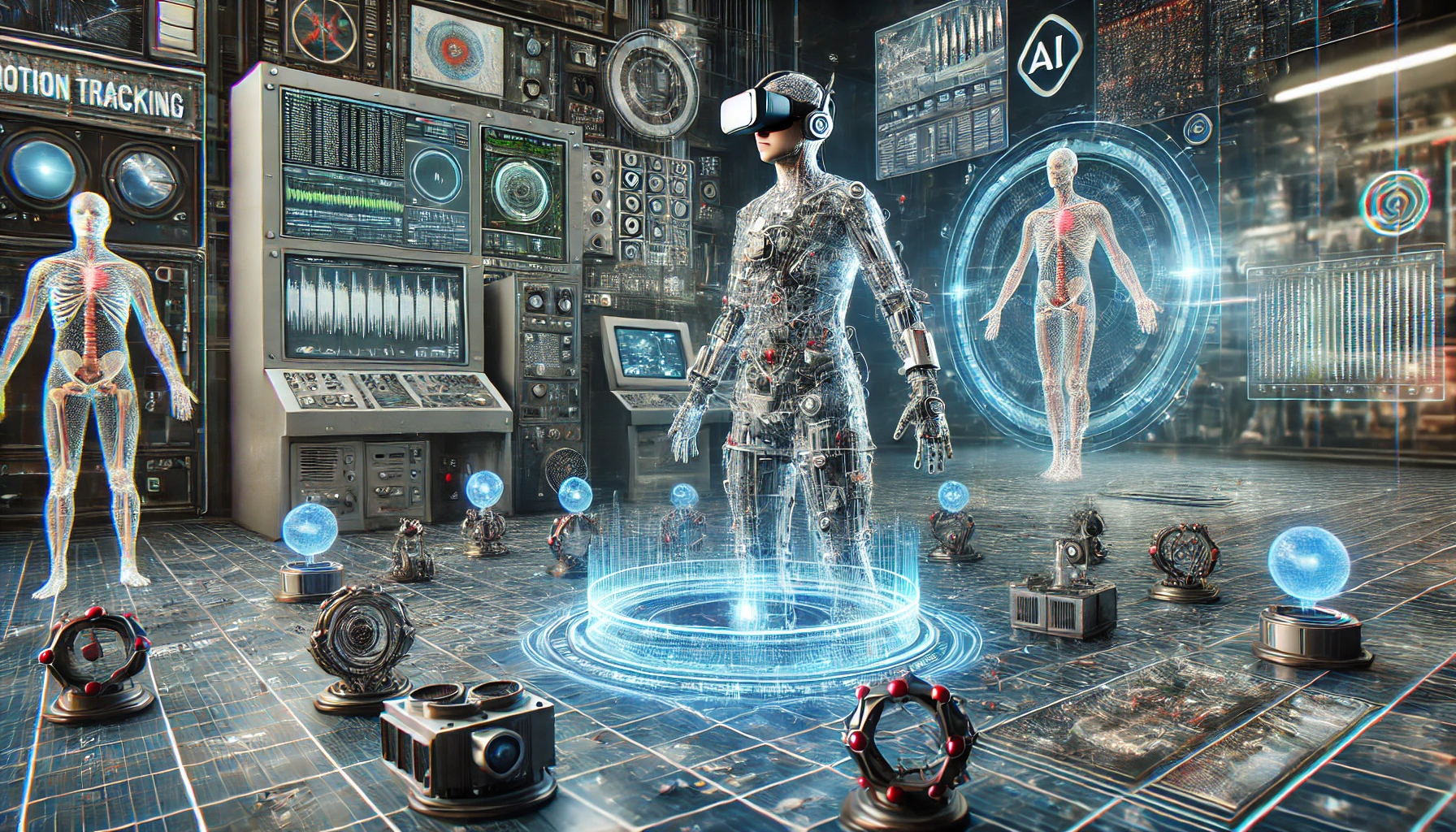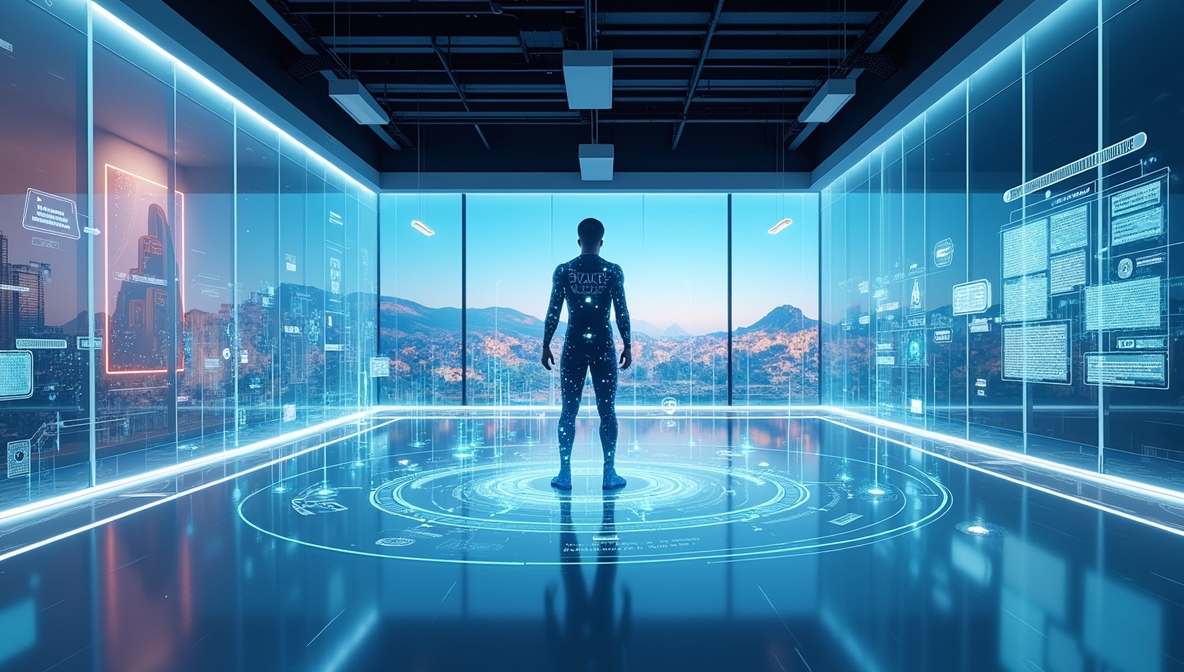What is Intelligent Motion Tracking in Virtual Environments?
Definition of Intelligent Motion Tracking
Intelligent motion tracking refers to the technology that allows virtual environments to respond to user movements in real-time. Unlike traditional motion tracking systems that use basic sensors, intelligent motion tracking incorporates Artificial Intelligence (AI) to analyze and predict movements, ensuring more accurate and responsive interactions within virtual worlds.
Importance in Virtual Reality (VR)
In VR, intelligent motion tracking is essential for creating immersive, lifelike experiences. By using sophisticated sensors and AI, this technology enables the system to mirror the user’s physical actions in virtual environments, whether in gaming, simulations, or training applications.
Overview of the Article
In this article, we’ll dive into the core technology behind intelligent motion tracking, its applications, challenges, and future potential. You’ll learn how this system enhances user experiences in VR and beyond, making virtual environments more interactive and intuitive.

The Core Technology Behind Intelligent Motion Tracking
Sensors and Data Collection
Motion Sensors: Accelerometers, Gyroscopes, and Magnetometers
Motion sensors are fundamental in tracking movement within virtual environments. Accelerometers measure changes in velocity, gyroscopes track orientation, and magnetometers detect the direction of movement in relation to the Earth’s magnetic field.
Cameras and Depth Sensors
Cameras and depth sensors (infrared sensors, for example) track the movement of objects or users within a virtual space. These sensors capture detailed data to translate real-world motion into virtual movements.
Wearable Devices
Smart suits, gloves, and VR headsets are equipped with sensors that help collect motion data from the user’s body. This wearable tech enhances the precision of tracking, allowing for more nuanced interactions with the virtual environment.
Artificial Intelligence (AI) in Motion Tracking
AI plays a pivotal role in intelligent motion tracking. Machine learning algorithms process the data from sensors, interpreting user movements with precision and predicting future actions. This helps reduce latency and ensures that users’ movements are accurately reflected in virtual environments in real-time.
Real-Time Processing
The core challenge of intelligent motion tracking is processing large amounts of sensor data in real-time. Motion data must be converted into virtual actions within milliseconds to ensure seamless interaction, making the user feel as if they are truly immersed in the virtual world.
The Science of Intelligent Motion Tracking
Understanding Motion Capture
Motion capture (MoCap) is the foundation of intelligent motion tracking. While traditional motion capture uses markers on the body, intelligent systems integrate AI to track more subtle movements, like facial expressions or fine hand gestures, creating a more lifelike virtual presence.
Sensor Fusion
Sensor fusion refers to the combination of data from multiple sensors to improve tracking accuracy. In intelligent motion tracking, data from accelerometers, gyroscopes, cameras, and depth sensors are fused together, providing a cohesive and accurate picture of a user’s movements.
Latency and Precision
For any motion tracking system, reducing latency is critical. A delay between physical movement and virtual response can break immersion. Intelligent motion tracking ensures precision by using AI to continuously adjust and update virtual environments based on real-time input, ensuring smooth and accurate motion reflection.

Applications of Intelligent Motion Tracking in Virtual Environments
Virtual Reality (VR)
In VR, intelligent motion tracking enhances the gaming experience by allowing players to interact naturally with their environment. Whether it’s using hand gestures to manipulate virtual objects or moving through a 3D world, this technology makes VR feel lifelike and intuitive.
Augmented Reality (AR) and Mixed Reality (MR)
Intelligent motion tracking also plays a significant role in AR and MR. By accurately tracking the user’s movements and translating them into a virtual or augmented environment, these technologies help blend the real world with virtual elements, creating interactive and immersive experiences in real time.
Simulations and Training
In industries like aviation, medicine, and military, intelligent motion tracking is used in simulations to provide realistic training environments. This allows professionals to practice complex tasks, like surgery or piloting, in a virtual world with real-world precision.
Healthcare
Intelligent motion tracking is used in rehabilitation and physical therapy by tracking patients’ movements during exercises. This ensures proper form and helps monitor progress. It also aids in diagnostics by analyzing motion patterns to detect conditions like Parkinson’s disease or arthritis.
Fitness
Virtual fitness programs use intelligent motion tracking to track a user’s movements during workouts, providing real-time feedback. This adaptive technology helps create more personalized, immersive, and engaging fitness experiences.
The Challenges of Intelligent Motion Tracking in Virtual Environments
Accuracy and Drift
Maintaining consistent accuracy in motion tracking, especially in complex or large virtual spaces, is a challenge. Over time, sensors can experience drift, where the motion data becomes less accurate. Intelligent systems use calibration and AI adjustments to minimize this issue.
Latency Issues
Latency— the time delay between movement and response—can disrupt the immersive experience. Intelligent motion tracking systems focus on reducing latency through improved processing speeds, ensuring that the virtual environment reacts instantly to a user’s actions.
Occlusion and Environmental Interference
Objects or even the user’s body can obstruct sensors, causing inaccuracies in motion tracking. Techniques like multi-sensor tracking and smart algorithms help address occlusion, allowing systems to continue tracking even when sensors are partially blocked.
Cost and Accessibility
The advanced technology behind intelligent motion tracking comes with a price tag. While high-end systems are costly, there are efforts to develop more affordable versions to make this technology accessible to a wider audience.

The Future of Intelligent Motion Tracking in Virtual Environments
Advancements in AI and Sensor Technology
The future of intelligent motion tracking lies in further AI development. Machine learning algorithms will continue to improve the accuracy and responsiveness of motion tracking systems, while new sensors will offer even more precision in capturing subtle movements.
Full-Body Tracking
Future advancements will lead to full-body tracking, where not just hand and head movements, but also facial expressions, eye movements, and even small muscle movements, will be tracked in real-time for a more immersive virtual experience.
Wireless and Standalone Systems
Wireless and standalone motion tracking systems will become more popular, removing the need for external cameras or sensors. This will lead to more streamlined and user-friendly VR and AR experiences.
Social and Collaborative VR
Intelligent motion tracking will enhance social VR platforms by enabling more natural interactions. Users will be able to communicate through gestures, body language, and synchronized movements, fostering a more realistic social presence in virtual spaces.
Mixed Reality and Integration with Real-World Data
The future of intelligent motion tracking will involve integration with real-world data. Virtual environments will blend seamlessly with the real world, creating applications in industries like automotive design, education, and architecture.
Conclusion
Intelligent motion tracking has changed the way we interact with virtual environments. It enhances immersion, precision, and interactivity across gaming, healthcare, and beyond. As this technology evolves, the potential for even more realistic and immersive virtual experiences grows.
FAQs
1. What is intelligent motion tracking in virtual reality?
Answer: It’s a technology that allows virtual environments to respond to user movements with high precision, using AI and advanced sensors.
2. How does AI improve motion tracking?
Answer: AI helps process and predict motion data, improving accuracy and reducing latency, making the virtual environment more responsive.
3. What are the challenges of intelligent motion tracking?
Answer: Challenges include accuracy drift, latency, environmental interference, and the high cost of advanced systems.
4. What industries benefit from intelligent motion tracking?
Answer: Gaming, healthcare, military, education, and fitness industries all benefit from this technology’s precision and immersive capabilities.
5. What is the future of intelligent motion tracking in VR?
Answer: Future advancements include full-body tracking, wireless systems, and greater integration with real-world data for enhanced mixed reality experiences.


